
219
3826

A Gem of a Watch for a Diamond Year – the Jaeger 101

[The Queen and her watch: notice the slim bracelet on the wrist of the Monarch]
On May 13th this year Jaeger LeCoultre was chosen as the timekeeper of Queen Elizabeth II Diamond Jubillee. A short presentation and ceremony took place at Windsor Castle. The Jaeger LeCoultre 101 and Her Majesty Queen Elizabeth II of the United Kingdom of Great Britain and Northern Ireland, have shared most of the last 60 years together and in that time both have retained their position in the world with grace despite the world around them changing. The Jaeger LeCoultre 101 calibre remains (to this day) the smallest production manual wind movement in the world. Despite its vintage, and a few adjustments along the way, the 101 movement that you see today is much the same as it was when first made. 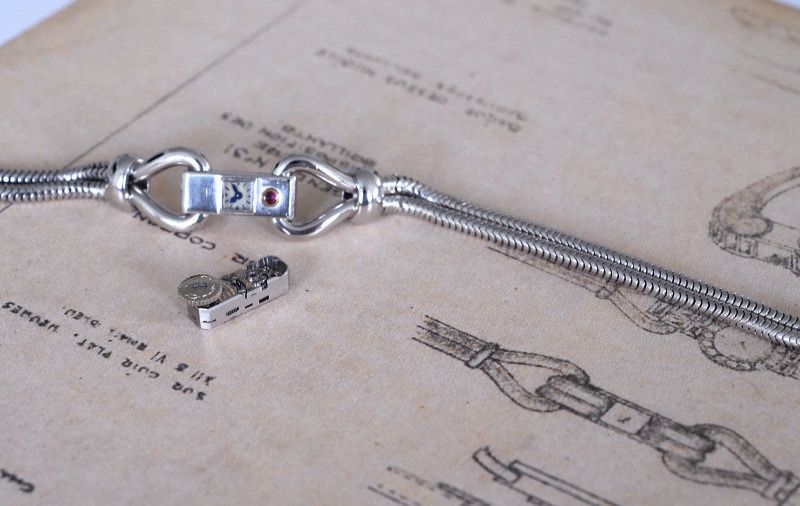
[The earliest Jaeger LeCoultre 101 in the collection, with the accompanying design drawing from the time]
[Designs for Japan: the magazine advert and the watches from the 1970’s]
[A Mondrian-esque design from the last decade]
In a world where the latest watch has gravitated towards the largest possible mechanical device to fix to the wrist, the 101 serves as a reminder of when pre-eminence in the watch world was marked by the ability to produce smaller, more accurate movements for a case of the same size and proportion. Etiquette in the 1930’s was that a lady was only to wear a watch during the daytime, not for formal or evening events. The 101 watch overcame the problem. Set in a diamond bracelet, the watch was all but hidden (apart from the small watch face) and hence a lady could tell the time at an event, without infringing on the etiquette rules of the time. It was for that reason Queen Elizabeth II for her Coronation chose to wear a 101 diamond bracelet watch for the occasion. Her Majesty could mark the passage of time during the day without anyone (except those standing very close by) being aware that a watch was being worn on the regal wrist. There was nothing else like it then; or now for that matter.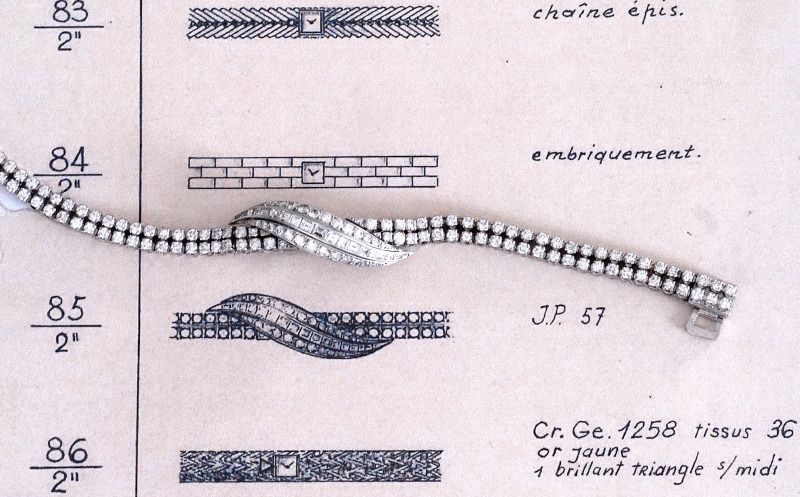
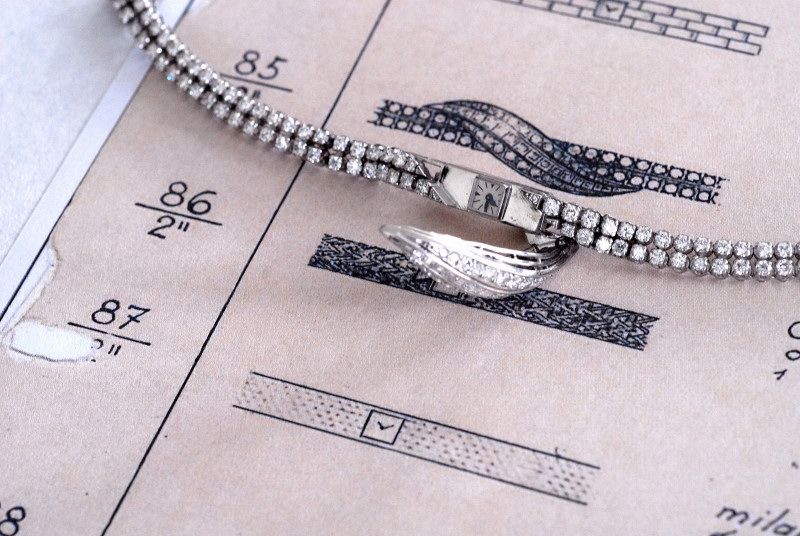
[The 101 jewelry pieces have been innovative: the watch face hidden below a moveable clasp]
There can be little doubt that along with the Reverso and Atmos clock, the 101 is Jaeger’s other iconic and historic piece. And in that, there is also recognition of Jaeger’s ability to push the miniaturization of a mechanical movement to the smallest possible set of dimensions. 1925 was an auspicious year. As well as being the year of birth for Her Majesty Queen Elizabeth II, it was also the year that Jaeger LeCoultre took a considerable step forward in reducing the size of the mechanical watch movement. Whereas previously, there was always a move by watchmakers to concentrate on a single plain to minimize the depth of the movement, Jaeger turned the problem on its head (almost literally). Jaeger introduced the Duoplan that took a small movement and made it smaller by basically dividing it in half: placing one part of the movement (the winding barrel and part of the gear train) on top of the other half (containing the other part of the gear train and the escapement). 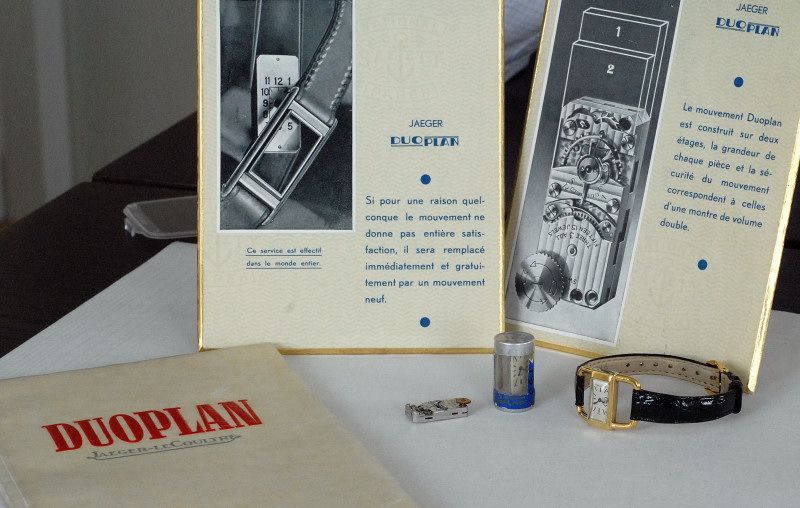
[The Duoplan watch from 1925 with the manufactures’ literature on the watch. If the movement needed replacing, the replacement movement was supplied in the tube and simply fitted into the watch case.]
The new architecture of the movement: constructing the movement in this manner, it made the movement stronger (more robust), but the design now aided the ability to repair the movement: being able to work on one half of the movement while the other half remains complete. 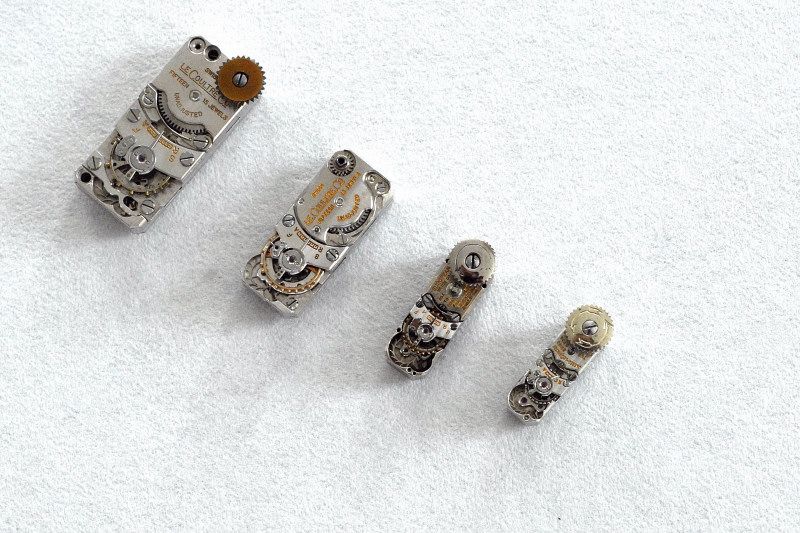
[From left to right: the 104 Duoplan movement from 1925; the 403 movement from 1927; the 409 movement from 1929 and then the 101 movement in also in 1929]
From the successful development of the Duoplan, it was now possible to reduce the size of the mechanical movement. In an industrious 4 years from 1925 until 1929 Jaeger succeeded in reducing the movement size from the 104 (Duoplan) to a staggering 14 x 4.8 x 3.4mm with the 101 movement. At its debut, the Calibre 101 set the record for the world’s smallest movement and 83 years later in 2012, it still holds that honour. When you think about all the patents and record-breaking feats announced every year in the world of horology, holding this distinction for such a long time is even more remarkable.
[The 101 movement was not simply the preserve of the women’s watches. A pair of men’s cufflinks from the 1930’s]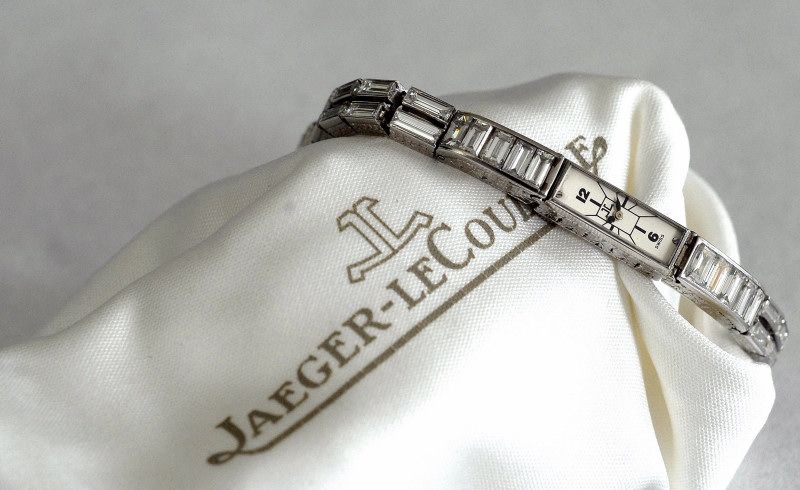
[A ladies diamond bracelet watch from the 1930’s]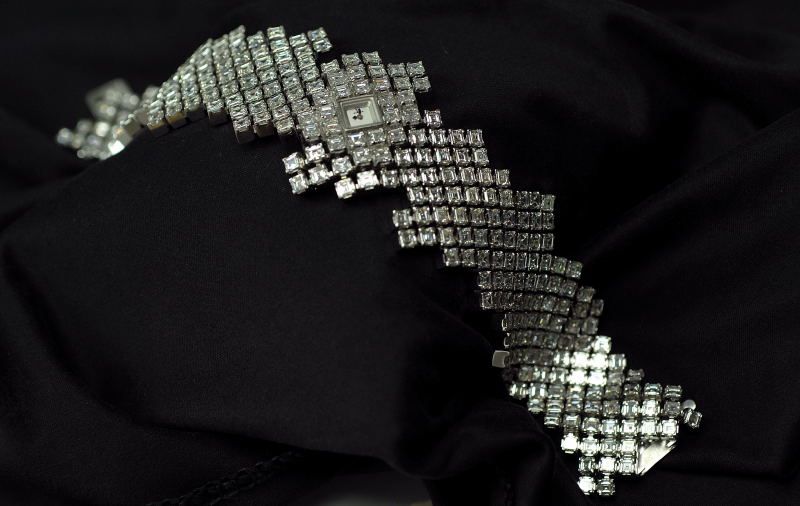
[A haute joaillerie piece from the last decade]
The current construction and development of the 101 movement since its inception in 1929 is possibly artisanal watchmaking still in its purest form. The watch parts are crafted in order that they fit the movement. The movement parts have to be individually examined and placed to make sure that they will work together. The movement construction requires such skill that only the most talented of the watchmakers at Jaeger LeCoultre can work on them. The same watchmakers that work on the high complications such as the Gyrotourbillon also work on the 101. The 101 movements are reserved these days for the most skilled of watchmakers. The ridculously small balance wheel and spring are fitted by the same specialist that fits the balance wheel and spring for the Gyrotourbillon 2. Both escapements use gold balance wheels both require extraordinary skill in manufacture and in timing within the movement. It is regulating the balance wheel in the 101 movement that contains the greatest degree of difficulty.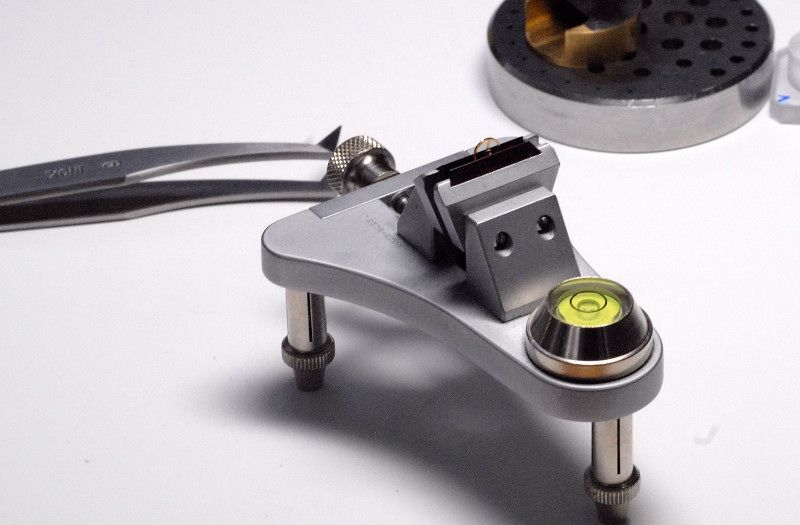

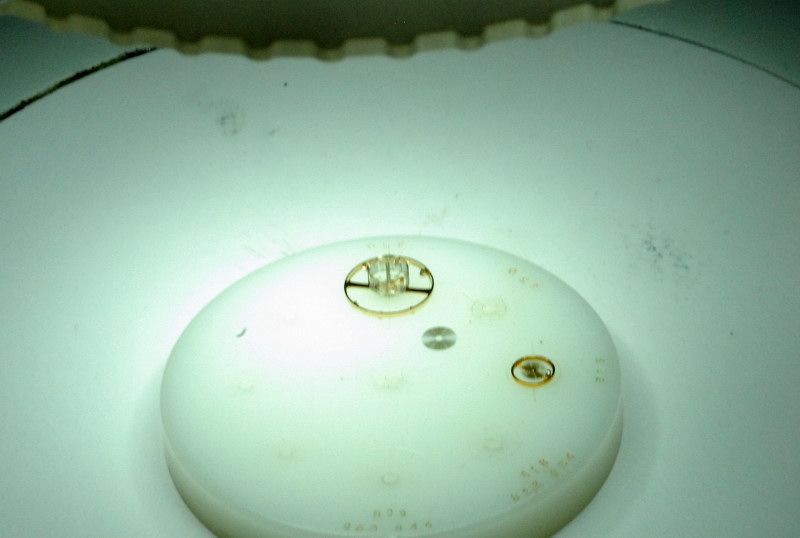
[Manufacturing the balance wheel and fitting the balance spring. Note the conical shaped balance spring and balance wheel for the Gyrotourbillon 2 alongside the 101 equivalent. Only one person, with one set of tools makes both at Jaeger LeCoultre]
Though the movement is not a limited edition in the strictest sense, the production is certainly limited, with only 50 (as a maximum) able to be made each year. In terms of production, the quantities are small. The official numbers from the Jaeger LeCoultre archives show that between 1929 and 1994 the total production was 1646 movements; or approximately 22 watches a year. For such a basic movement, innovations and progress have been made occasionally and every so often.
[A 101 movement on a watchmakers bench: note the almost cartoon like magnifying glasses attached to the spectacles – top right of the photo – that are needed to work on the smallest of mechanical movements.]
Improvements on the movement have been slight and only in the detail. Where as in 1929 Jaeger managed to fit 74 parts into the movement the current day total is 98. No one is too sure where the additional 24 parts have been placed (including several watchmakers and the Jaeger LeCoutlre historian). Over lunch, Stephane Belmont mused that he was not sure where you might fit an extra 24 parts, but they were necessary to improve the movement. The process of increased tolerances on the metal components, a main spring with improved capacity, a balance spring with a more consistent degree of oscillation, gear components that are slightly thinner and stronger, the watch design and layout remains the same. 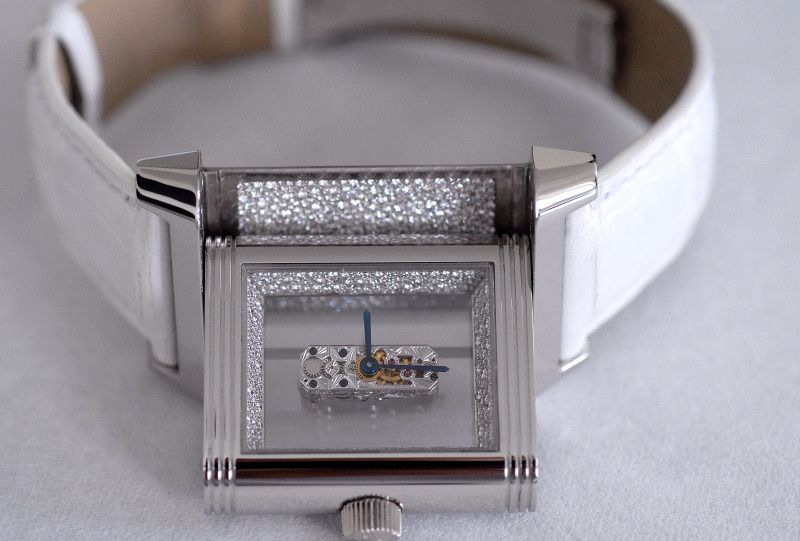
[A modern incorporation of the 101 movement into a Reverso case from the last decade]
In 1961 the movement incorporated a new way of using rubies: pressing the rubies into the plate rather than a gem-setting method. In 1966 the balance wheel with screws was replaced by a ring balance wheel made from gold. It aided efficiency and time keeping with the movement. In addition an anti-shock system to the escapement was also fitted (that resulted in an extra 8 parts). In 1982 the gear train was re-designed for the first time since 1929; and by 1983 the plates for the movement were now cut using CNC machines (whereas before they had been cut with cutting machines controlled by hand). Finally, in 1991, under the auspices of Sylvain Golay (who was the head watchmaker at Jaeger LeCoultre at the time), a skeltetonized version was made. 
[The modern state of the art for the 101: diamond inlaid case and bracelet]
===
For the rest of Andrew's post in JLC forum, jlc.watchprosite.com
